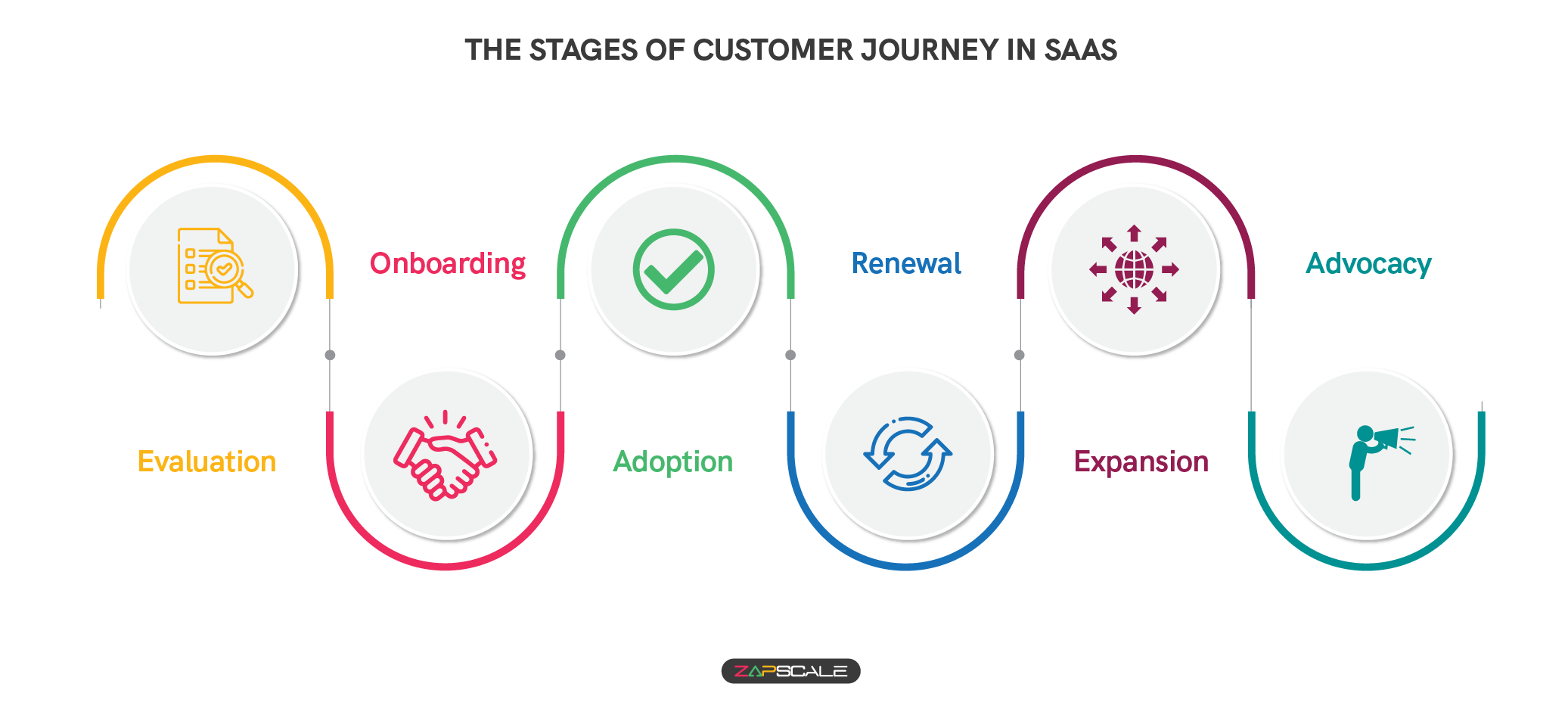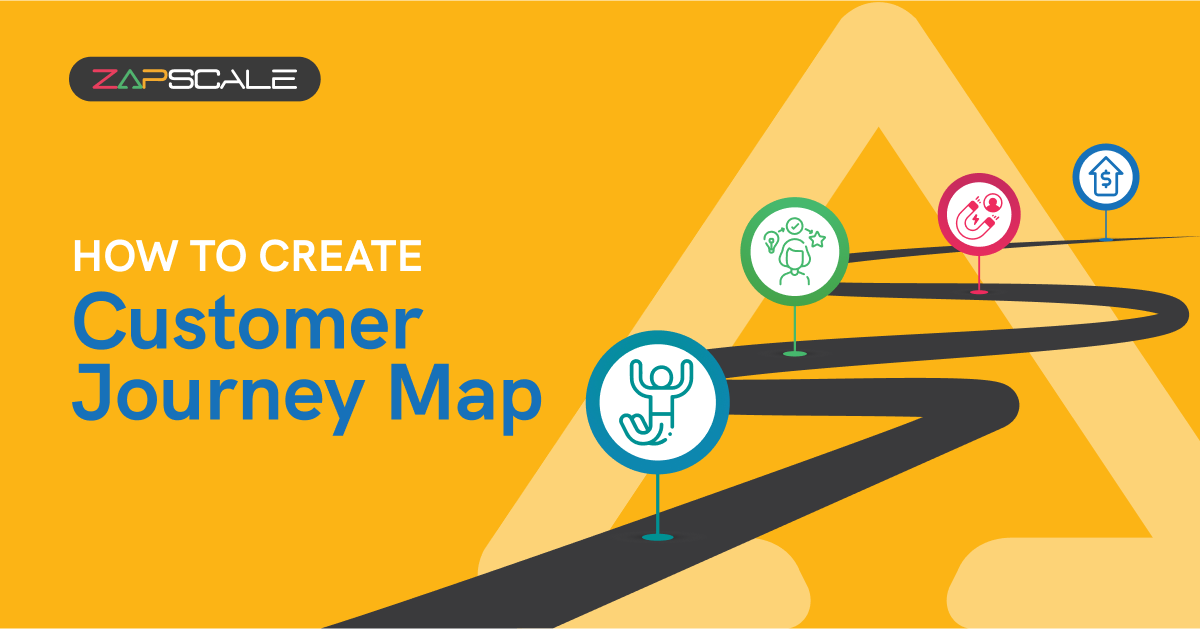CATEGORY > Customer Journey
Using AI To Transform Customer Journeys into Revenue Streams

Calling all Customer Success Leaders! Are you part of the Artificial Intelligence (AI) movement yet? If you aren’t, it’s time to get on board. AI is here to stay! But before you go and purchase every single tool that’s out there, first consider what you are trying to accomplish with AI. Not sure where to start? Well, you’ve come to the right place! Read along for some insights on how and where to get started.
The Role of Artificial Intelligence in Customer Success
AI in Customer Success is about leveraging technology to predict, personalize, and improve the customer experience. It's not just a tool for efficiency; it's a strategic partner that helps you understand and act on customer data in real time.
Companies increasingly rely on AI to gain competitive advantage, so its importance in Customer Success cannot be overstated.
How to map the Customer Journey with AI?
Customer Journey Mapping is the process of outlining every interaction a typical customer has with your company, from initial engagement through post-sale stages.
This visual map is crucial for understanding the customer’s needs, identifying key touchpoints, and tailoring interactions that drive value realization. AI can enhance this process by analyzing customer data to reveal patterns and preferences, helping you to predict future behaviors and tailor the journey to meet customer needs more effectively.
Steps to automate your Customer Journey Map
Here are the steps to automate your Customer Journey Map:
1. Uncover Pain Points For Strategic Improvement
First, decide why you are creating the map - is it to improve customer experience, identify pain points, or something else?
Look at customer feedback, support tickets, and survey responses to identify common pain points among your customers.
AI tools like Crayon and MarketMuse can help you uncover areas of improvement by analyzing this qualitative data and creating relevant content that addresses needs at each stage.
Having a clear purpose guides the overall strategy and ensures that the map aligns with your business goals.
2. Segment Customers For Personalized Touchpoints
Second, segment your customers based on preferences or behaviors. Customer segmentation can help you understand your ideal customer profile (ICP) and identify your customer journey steps. Tools such as ZapScale can help you improve customer experiences through personalized touchpoints.

For example, a SaaS customer journey typically focuses on these key stages:

- Evaluation – when a prospective buyer is considering purchasing your product or service
- Onboarding – when a new customer performs a set of activities to start using your product or service
- Adoption – when a customer has completed onboarding and is now a regular user of your product and service, getting value from his/her purchase
- Renewal – based on the value the customer is getting from your product or service is now renewing his/her subscription
- Expansion – when a satisfied customer purchases additional services and upgrades of your product
- Advocacy – when a satisfied customer becomes a promoter of your company, product, and service and brings in new business
3. Mapping Touchpoints
Third, gather details of each touchpoint in each stage (using customer feedback, analytics, and other data sources) including what the desired outcome should be.
You can use Hubspot’s free templates for this exercise.
4. Maintaining Customer Journey Maps
Fourth, generate your Customer Journey Map and share it with your team. Having a team member be in charge of updating this map monthly or whenever new changes are being made to the customer’s journey, will help keep everyone aligned to the customer’s goals and maintain the map’s accuracy over time.
Leverage AI writing assistants, like ChatGPT, to help write clear descriptions of each touchpoint and customer sentiment for the journey map.
5. Optimize Customer Journey Sub-Tasks
Fifth, start optimizing and automating the sub-tasks within each stage to bring about successful results. You can set up automated responses or actions based on customer behavior, health score, or milestones.
Stages of Customer Journey
1. Evaluation Stage
- Objective: Streamline the process of guiding prospective customers from awareness to interest.
- Process: The key here is to capture interest with relevant, engaging interactions that make the first step toward purchasing your product or service seamless.
For example, engage your Sales team to program Intercom or Drift AI chatbots that recognize certain keywords related to your product's features or the source of the referral, providing personalized responses or guiding the visitor towards a freemium subscription.
2. Onboarding Stage
- Objective: Ensure a new customer can easily set up, start using your product or service, and quickly find value in your product.
- Process: In this stage, you or your Onboarding Specialists should be able to track progress, provide helpful tips, and even offer personalized paths based on customer actions.
For example, Pendo or WalkMe’s interactive guides lead customers through initial setup steps, such as creating passwords, setting up profiles, and navigating basic features. Realizing value quickly leads to customer retention.
3. Renewal
- Objective: Predict which customers are likely to renew and identify those at risk of churn.
- Process: If your team is in charge of renewals, then every member should be tracking and engaging customers with personalized outreach and highlighting the ongoing value your product or service offers. This proactive approach helps customers from churning.
For example, ZapScale can analyze customer usage data, support interactions, and satisfaction scores to forecast renewal probabilities. These automated alerts can then prompt your team to engage at-risk customers and ensure that other customers continue to be happy.

4. Expansion
- Objective: Identify upsell and cross-sell opportunities based on usage patterns and customer behavior.
- Process: Just like in the previous bullet point, if your team is in charge of driving revenue (upsell, cross-sell, renewal), your team members should be analyzing customer behavior and use automated messaging to offer targeted upgrades, personalized to the customer's specific needs and usage history.
This will enhance the customer’s experience with your product or service. For example, ZapScale can be used to analyze customer data to predict which users might benefit from advanced features, additional licenses, or premium plans.
5. Advocacy
- Objective: Recognize and reward loyal customers so they become your advocates.
- Process: One of the cost-effective ways of gaining new business is through the advocacy program. Customers who are genuinely happy with your product and service can be your partners and advocates in generating new revenue.
Tools like Influitive can be used to identify potential advocates based on their engagement levels and feedback. These customers can earn rewards for referrals or testimonials. This not only builds loyalty but also turns satisfied customers into vocal champions of your company, product, or service.
The Impact of AI on Customer Success
In summary, AI and automation across the Customer Journey directly impact the bottom line by driving revenue growth.
Look at your Customer Journey Map to figure out where you can use AI and automation to get your customers to engage and adapt as quickly as possible so they can be retained and in turn, become your advocates.
By tailoring interactions from the evaluation stage through to advocacy, you not only improve the customer experience but also optimize conversion rates, reduce churn, and increase upsell opportunities. Each stage of automation plays a critical role in maximizing customer lifetime value.
In the SaaS industry, where customer expectations are high, leveraging AI in customer success strategies is important. It allows companies to not only meet but exceed customer needs, turning satisfaction into loyalty and loyalty into revenue. Happy automating!
ABOUT THE AUTHOR

Divya Apte
Divya Apte is a Customer Success Leader who has over 15 years of experience working in SaaS, B2B, B2C, and B2G in roles ranging from Software Engineer to Project Manager, and from Strategic Partnership Manager to entrepreneur. As a CS professional, Divya finds joy in demystifying technology for her customers, helping them see quick results, and turning them into advocates.
Connect with her on LinkedIn.
Popular from Customer Journey
Quality Content,
Straight To Your Inbox!
Subscribe for the latest blogs, podcasts, webinars, and events!

Write a Blog
If you have experience in CS and
a flair for writing, we’d love to
feature you.
Write to us on
hello@zapscale.com




